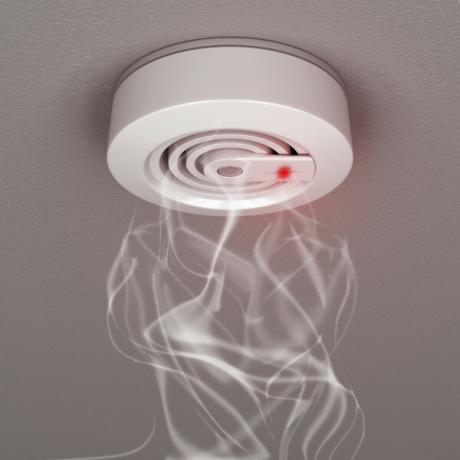Carbon monoxide is a gas produced on the basis of incomplete burning in combustible materialrich in carbon. Despite its applications in industry, it's an asphyxiating gas very toxic which, depending on the exposure time and the amount inhaled, may lead to death.
Features
Gas colorless, odorless, flammable, less dense than the atmospheric airit's from molecular formulaCO, carbon monoxide is produced based on burning, under low oxygen available, from fossil fuels and compounds that contain carbon, in what we call incomplete combustion. carbon monoxide is a gas extremely dangerous, as it is a choking chemical that can lead to intoxication.
Know more:Complete and incomplete combustion
properties
Carbon monoxide has the molecular formula CO, and its molar mass it's from 28 g/mol. This substance is found in the gaseous state at room temperature (melting temperature = −205.07 °C; boiling temperature = -191.5°C) and has density equal to 1.25 kg·m−3 at 0 °C. As it is an odorless, tasteless and colorless gas, it is even more dangerous, as these characteristics make it difficult to identify it in case of leaks.
Where to find
The most frequent sources that most corroborate with the emission of CO into the atmosphere are the burned and the fuel burning derived from Petroleum in vehicles.
In relation to this last case, the no engine maintenance and other vehicle components makes fuel combustion incomplete, releasing carbon monoxide and even carbon, which, in some cases, becomes visible when leaving the exhaust in the form of soot.
The release of carbon monoxide can occur in space heating equipment, which use as a principle the burning of gas or kerosene, what are not regulated and with up-to-date maintenance.
Read too: Fossil fuels
Use
Carbon monoxide has already been used during the Second World War, in the gas chambers from the Nazi concentration camps. It is currently used on an industrial scale for the production of iron, nickel, cobalt and other metals, taking off the oxygenFrom related ores and reducing it to CO2.
CO is also used in synthesis of several organic compounds, such as Acetic Acid, formic acid, plastics, esters and alcohols.
Intoxication
THE main route of intoxication with carbon monoxide is the respiratory, which causes the CO arrive at lungs quickly and cause intoxication. Once inhaled, carbon monoxide is diffused by blood vessels, combining with hemoglobin, responsible for the transport of O2 by the human body, resulting in the carboxyhemoglobin.
Carbon monoxide has about 200 times more affinity with hemoglobin than oxygen gas and, by binding to it, decreases the amount of available hemoglobin to transport the2 fur Human Body. That competition with oxygen he can lead to death by suffocation.

By binding to hemoglobin, carbon monoxide prevents the interaction of hemoglobin with oxygen gas.
Inhalation Effects
After its inhalation, carbon monoxide can cause mild poisoning symptoms, headaches and even shortness of breath, leading to death. Symptoms depend on the concentration of CO in the atmospheric air and the time of exposure to the gas. One quick exposure to gas can lead to fainting, confused feeling, nausea and headaches.
When the inhalation time increases, the symptoms worsen and can lead to poisoning. central nervous system, convulsions, decrease in heart rate and breathing, causing the death of the organism.
How to avoid intoxication
Carbon monoxide poisoning can be avoided reducing possible emission sources of the gas in environments with low ventilation, such as gas or kerosene heaters, wood stoves, etc. In addition, it is necessary that such equipment is in good condition and functioning, taking into account the security measures adopted for its use.

Smoke detectors can help detect carbon monoxide in the event of a leak.
Currently there are carbon monoxide detectors that can be installed in places to assistant at leak identification, since carbon monoxide is a gas difficult to detect by human senses.
By Victor Ricardo Ferreira
Chemistry teacher
Source: Brazil School - https://brasilescola.uol.com.br/quimica/monoxido-carbono.htm
